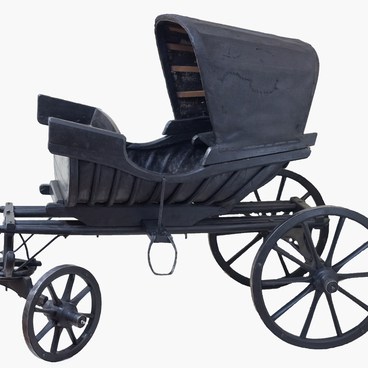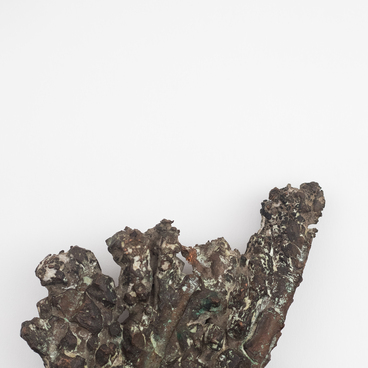A battle axe of the 10th — early 11th century was discovered during the excavations of early medieval burial mounds in South Karelia and the Southeastern Ladoga area. The archaeological site is located near the village of Rabola on the right bank of a stream that flows into the Tuloksa River.
Axes of this type were used in close combat. They are of Scandinavian origin, but Ladoga tribes also often used such weapons. The axe is displayed in the section of the permanent exhibition “Northern Borderlands. Karelia in the Middle Ages. 9th — 17th centuries”. The Scandinavian sagas first mention “Kirjalaland” — the “Country of Kirjala” — for the first time back in the 9th century. This is how the Karelian lands were called in the epic.
From the 9th to 11th century, Ladoga, and then Novgorod, became the largest northern trade and craft centers of Russia. Technologies developed here, handicraft traditions were improved, including armor.
In the early Middle Ages, the ancestors of today’s Karelians and Vepsians — the ancient tribes were mentioned in chronicles as “Korela” and “Ves” — lived on the territories of the Ladoga coast and in the Mezhozerie. From the 8th–9th centuries, the Ladoga area turned out to be a zone where two worlds met: the Slavic and the Scandinavian one. During this period, the Eastern Slavs continued their movement to the north, and for the Scandinavians from the shores of Lake Ladoga, paths to rich southern cities and markets were opened. The inevitable clash of interests in such a situation led to the emergence of statehood in the Baltic–Ladoga region.
During the spread of Christianity, religious disputes were added to the territorial and economic contradictions of the Baltic states. The era of the Crusades began. The rivalry between Sweden and Novgorod became an irreconcilable struggle between two civilizations: the Catholic and the Orthodox one. Ladoga remained the arena of the unfolding confrontation. The Orekhovets peace treaty of 1323 did not stop the Swedish claims, but divided the original Karelian territories and finally included the Karelian land into the Novgorod state. In 1478, Karelia became part of the Moscow state.
The weakening of the Russian state during the Time of Troubles again led to an unfavorable change of borders. According to the Stolbovsky Peace Treaty of 1617, the Karelian Uezd belonged to the kingdom of Sweden for more than a hundred years. In 1649, the fortified city of Olonets became the center of Karelia.
Axes of this type were used in close combat. They are of Scandinavian origin, but Ladoga tribes also often used such weapons. The axe is displayed in the section of the permanent exhibition “Northern Borderlands. Karelia in the Middle Ages. 9th — 17th centuries”. The Scandinavian sagas first mention “Kirjalaland” — the “Country of Kirjala” — for the first time back in the 9th century. This is how the Karelian lands were called in the epic.
From the 9th to 11th century, Ladoga, and then Novgorod, became the largest northern trade and craft centers of Russia. Technologies developed here, handicraft traditions were improved, including armor.
In the early Middle Ages, the ancestors of today’s Karelians and Vepsians — the ancient tribes were mentioned in chronicles as “Korela” and “Ves” — lived on the territories of the Ladoga coast and in the Mezhozerie. From the 8th–9th centuries, the Ladoga area turned out to be a zone where two worlds met: the Slavic and the Scandinavian one. During this period, the Eastern Slavs continued their movement to the north, and for the Scandinavians from the shores of Lake Ladoga, paths to rich southern cities and markets were opened. The inevitable clash of interests in such a situation led to the emergence of statehood in the Baltic–Ladoga region.
During the spread of Christianity, religious disputes were added to the territorial and economic contradictions of the Baltic states. The era of the Crusades began. The rivalry between Sweden and Novgorod became an irreconcilable struggle between two civilizations: the Catholic and the Orthodox one. Ladoga remained the arena of the unfolding confrontation. The Orekhovets peace treaty of 1323 did not stop the Swedish claims, but divided the original Karelian territories and finally included the Karelian land into the Novgorod state. In 1478, Karelia became part of the Moscow state.
The weakening of the Russian state during the Time of Troubles again led to an unfavorable change of borders. According to the Stolbovsky Peace Treaty of 1617, the Karelian Uezd belonged to the kingdom of Sweden for more than a hundred years. In 1649, the fortified city of Olonets became the center of Karelia.



